Digital Street Photography at the 108th Indianapolis 500
Long Ago (and Far Away)
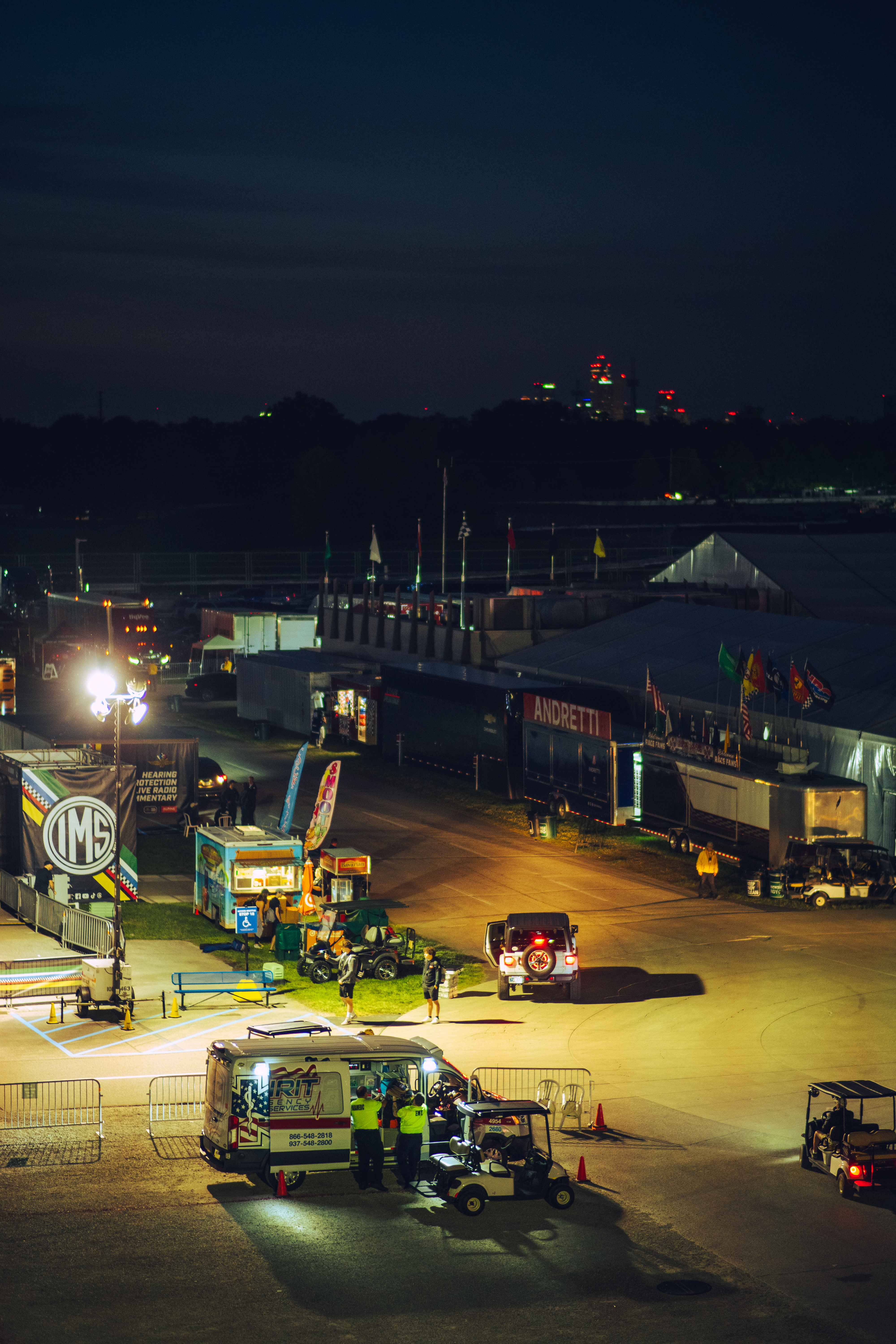
There’s a silent breeze that flows through Indianapolis. It’s sad when you sit in it for a second. I felt it at 5:55 a.m. on a balcony at the Indianapolis Motor Speedway as I watched the sky bloom with gradients of dark blues and deep reds. Around the track, distant floodlights illuminated disparate scenes of ground staff employees in yellow shirts, waiting for their long day to begin. It was the morning of the 108th Indianapolis 500, the most prestigious motor race in the United States. Small red lights beamed from the handful of tall-ish buildings in the distance. At 6 a.m., a ceremonial cannon shot off into the Indiana horizon beckoning the day to begin. Red, white and blue fireworks lit up the cotton candy sky. It was peaceful. As the sun woke up, a nine-hole golf course, parking lots and an endless stretch of grandstands awoke to join the rest of us.

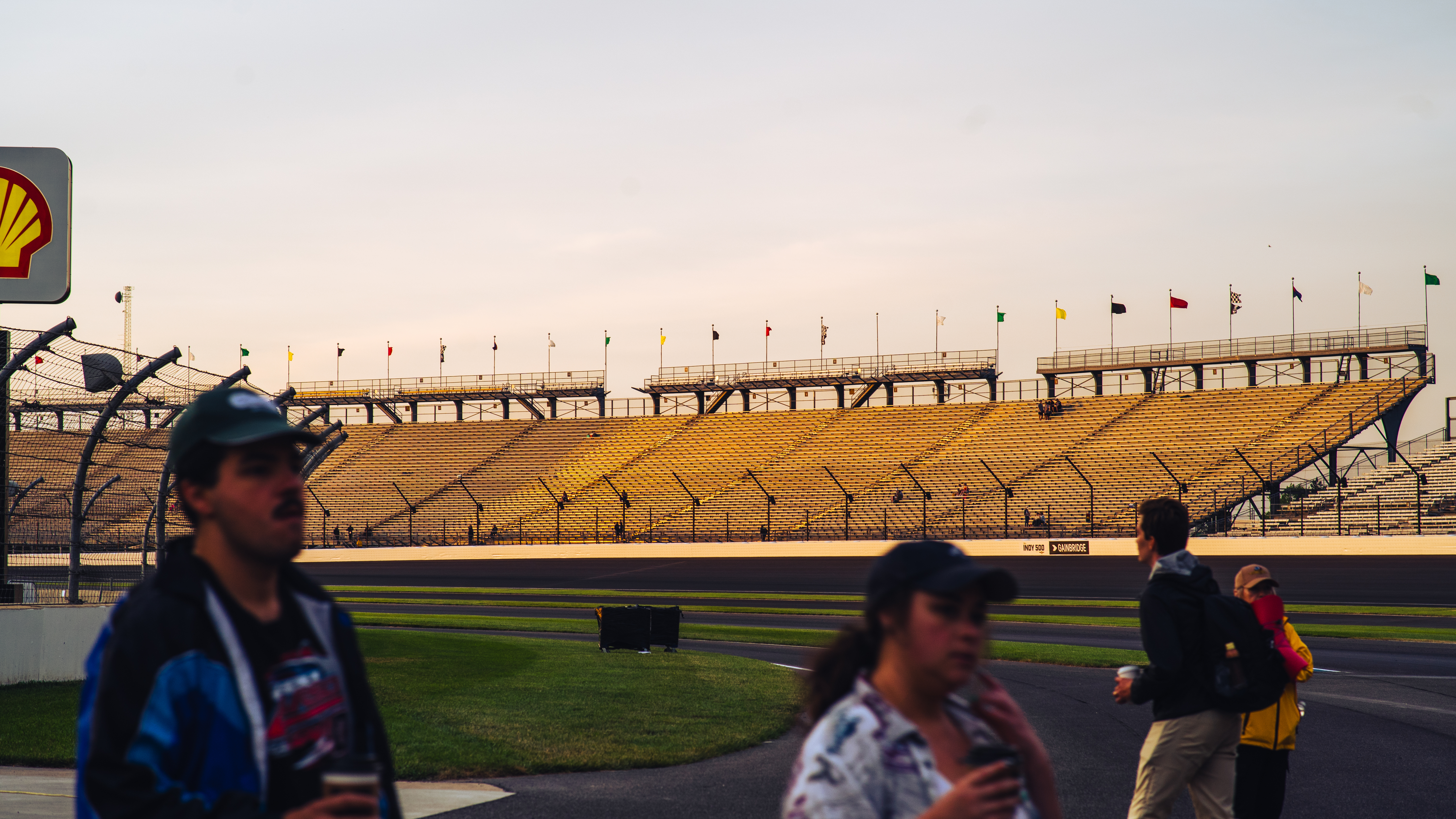
After the gates opened at 6 a.m., people piled in – from every corner, through every gate. Throughout the morning, executives gave tours through bustling walkways in the garages while TV cameras and personalities populated the track. The sun glimmered before hiding away in the growing overcast. The pre-race fanfare accelerated while racing legends — both drivers and cars — did laps around the prestigious oval. They wheeled out more lights for the news anchors when the clouds darkened. The Purdue Marching Band played for a little while.
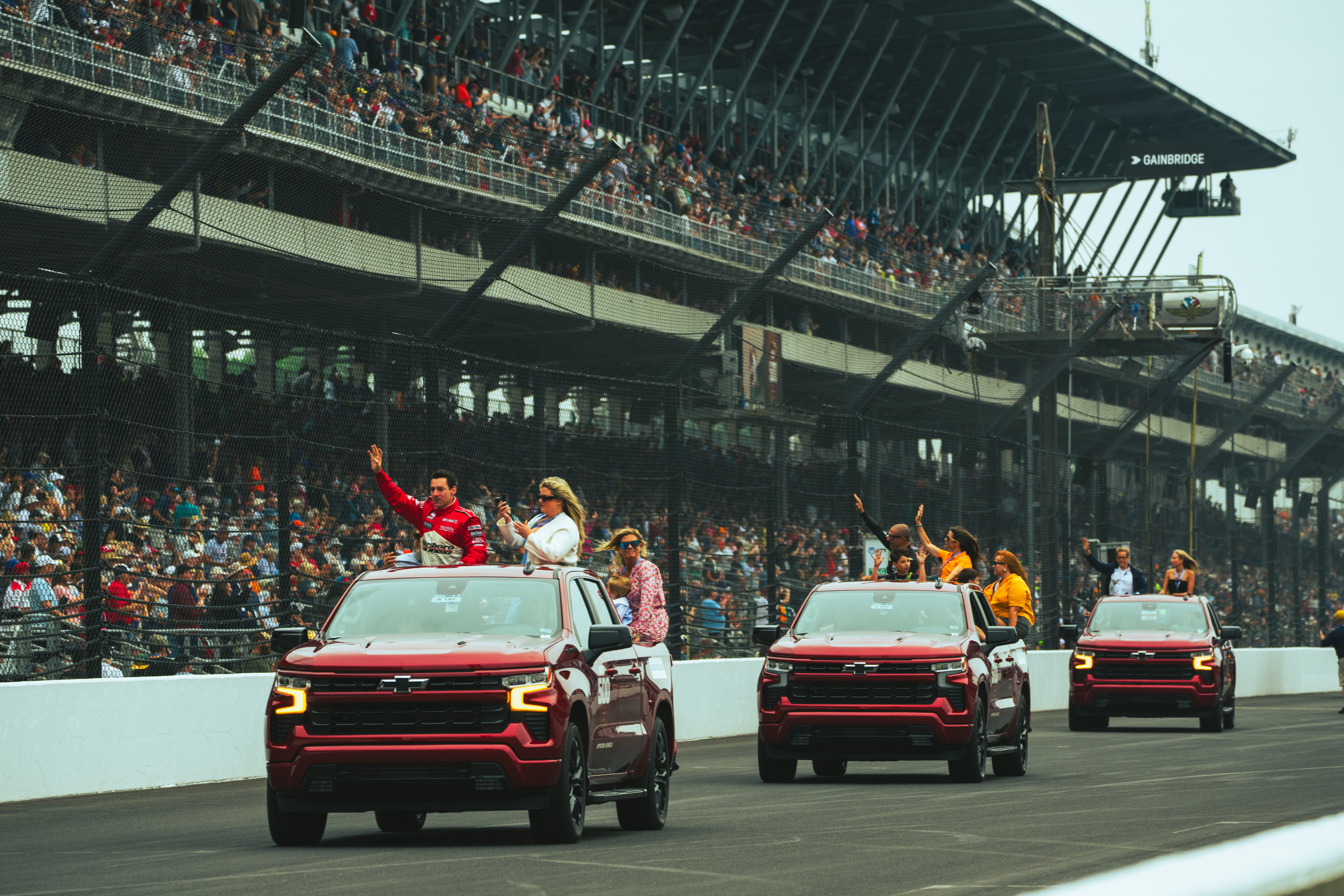
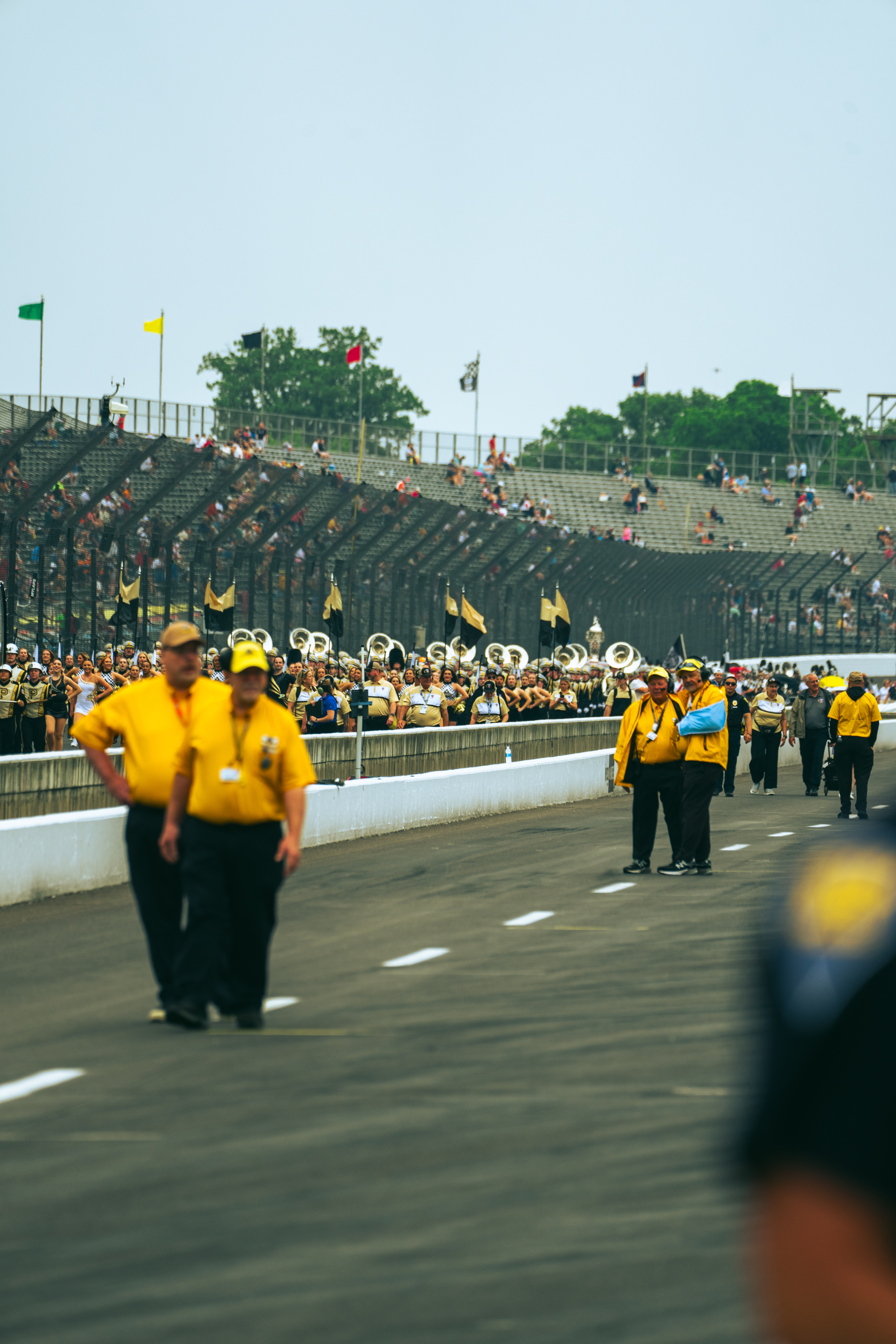
Influencers and celebrities did their laps up and down pit road, but the race cars slept a little longer in their garages. We had been briefed that morning about the potential for rain and the precautions for evacuating fans. Our hotel was reserved until Monday in case the race was delayed a day. None of us wanted that, but, nonetheless, the clouds continued to grow more menacing. Everyone knew what was about to happen. The wind picked up but the show went on until, finally, spots of drizzle began to drop and every photographer with expensive equipment darted undercover. Fans were told to evacuate as the drips turned into downpours. The six-hour buildup disintegrated like cotton candy in water. A gray plainness enveloped the world, and we all went inside to hide.
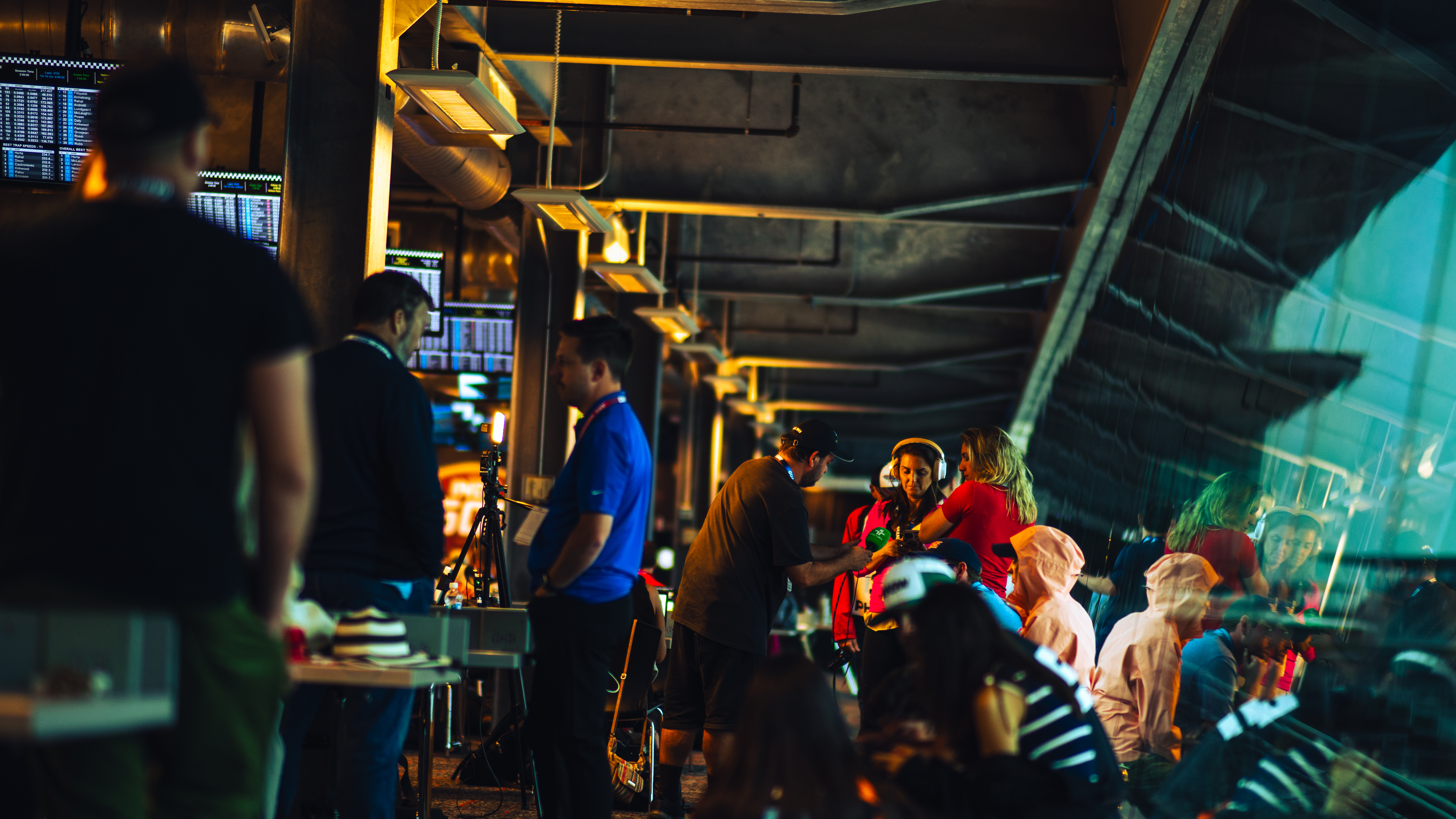
An eternity later, I woke up from a nap on the slanted glass windows in the Media Center. All the tables and chairs in the media center were occupied by tired press. The last few laps of the Monaco Grand Prix played live on some of the many TVs in the room. I went out to the balcony for a breath of fresh air. The world was completely lifeless as rain danced in puddles on concrete paths and gravel sidewalks. Apart from the few loyalists still dedicated to the cause, the grandstands had been totally cleared. The trees were still green, but shadowy and cold, lost in the haze of the stormy, gray sky. The glorious smells of carnival fare fought valiantly through the damp atmosphere, and only barely managed. It was eerily silent out here — countless American flags whipping around with each gust of wind.
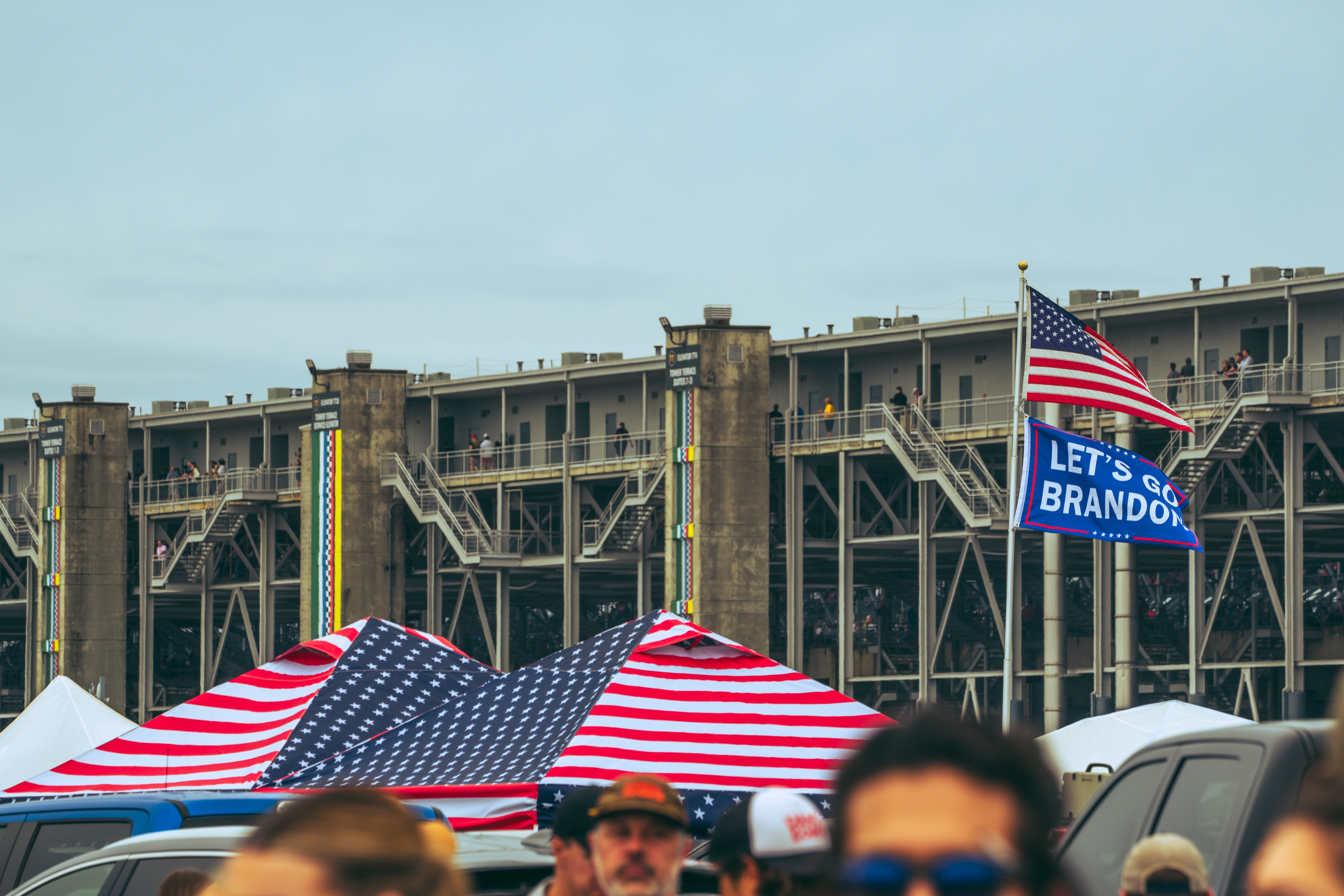
I love the rain more than anything; anytime it rains I always wish it rained some more. But when I walked out onto that foreign planet, I desperately wanted it to stop. I needed it to stop. My brain had been revving since 4:30 a.m. and the more the race was delayed, the more my nerves heckled me. Instead of peace, all I felt on that balcony was dread. I was sent here to do a job; photograph one of the most iconic races on the planet. This was a chance I wouldn’t easily get again. I was going up against professional motorsport photographers with big (expensive) cameras and long (even more expensive) lenses. The drivers’ parade the day before was unimportant and the buildup wasn’t the content people were trained to see nowadays. I wanted desperately to show something different, something new in this storied coliseum that the world hadn’t seen before. If I couldn’t, then why was I there? I needed the rain to stop, but the wind persisted nonetheless, and I went inside to try to rest some more.

—
(76 laps of) The 108th Running of the Indianapolis 500® presented by Gainbridge
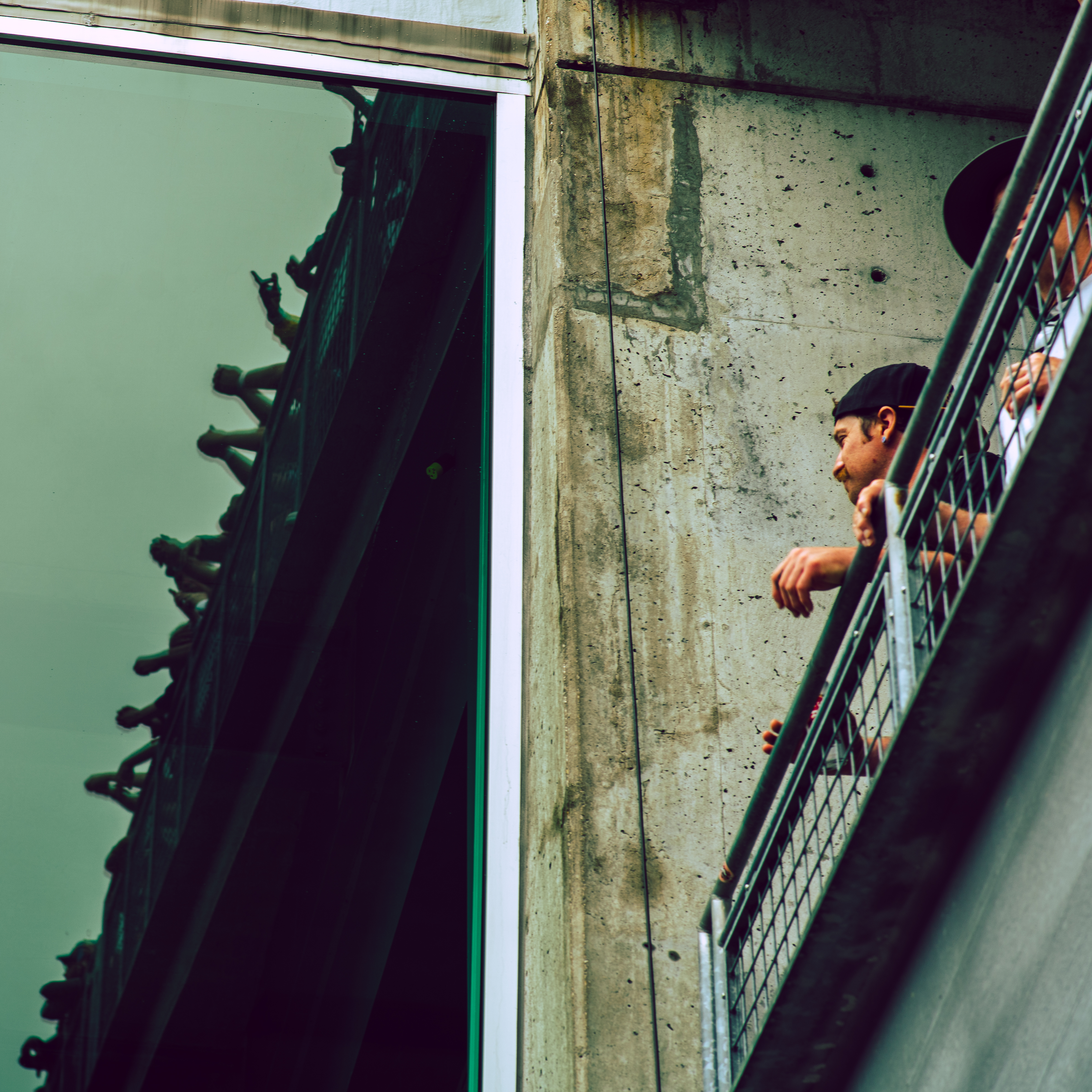
Scary-looking sweepers cleared puddles on the smooth track. The rain always stops. In the Media Center, every photographer took their time affixing their gear, cramming every pen and snack in each pocket before leaving the comfort of cool serenity. It’s a tough door to walk out of on a bad day. But you walk out anyway.
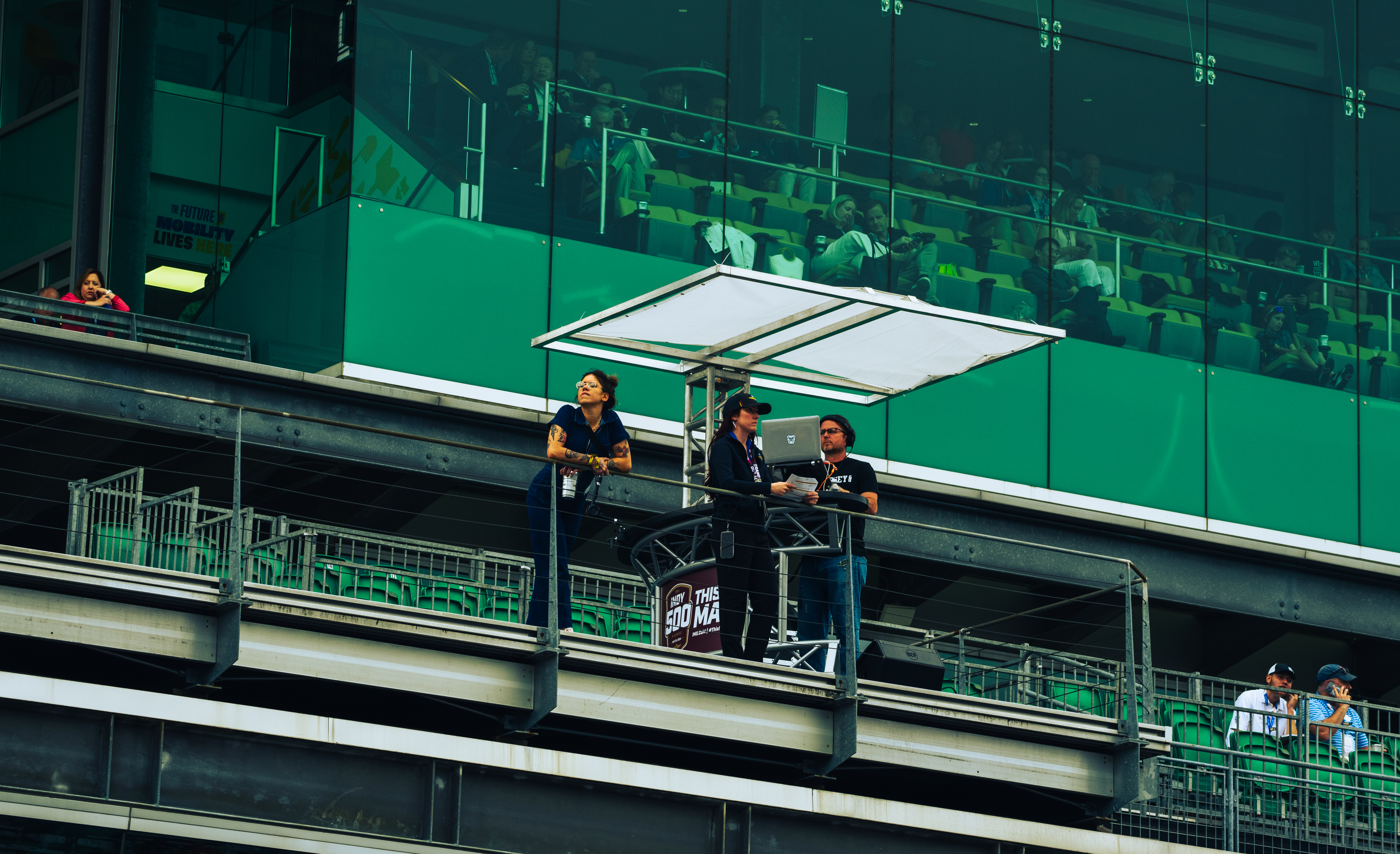
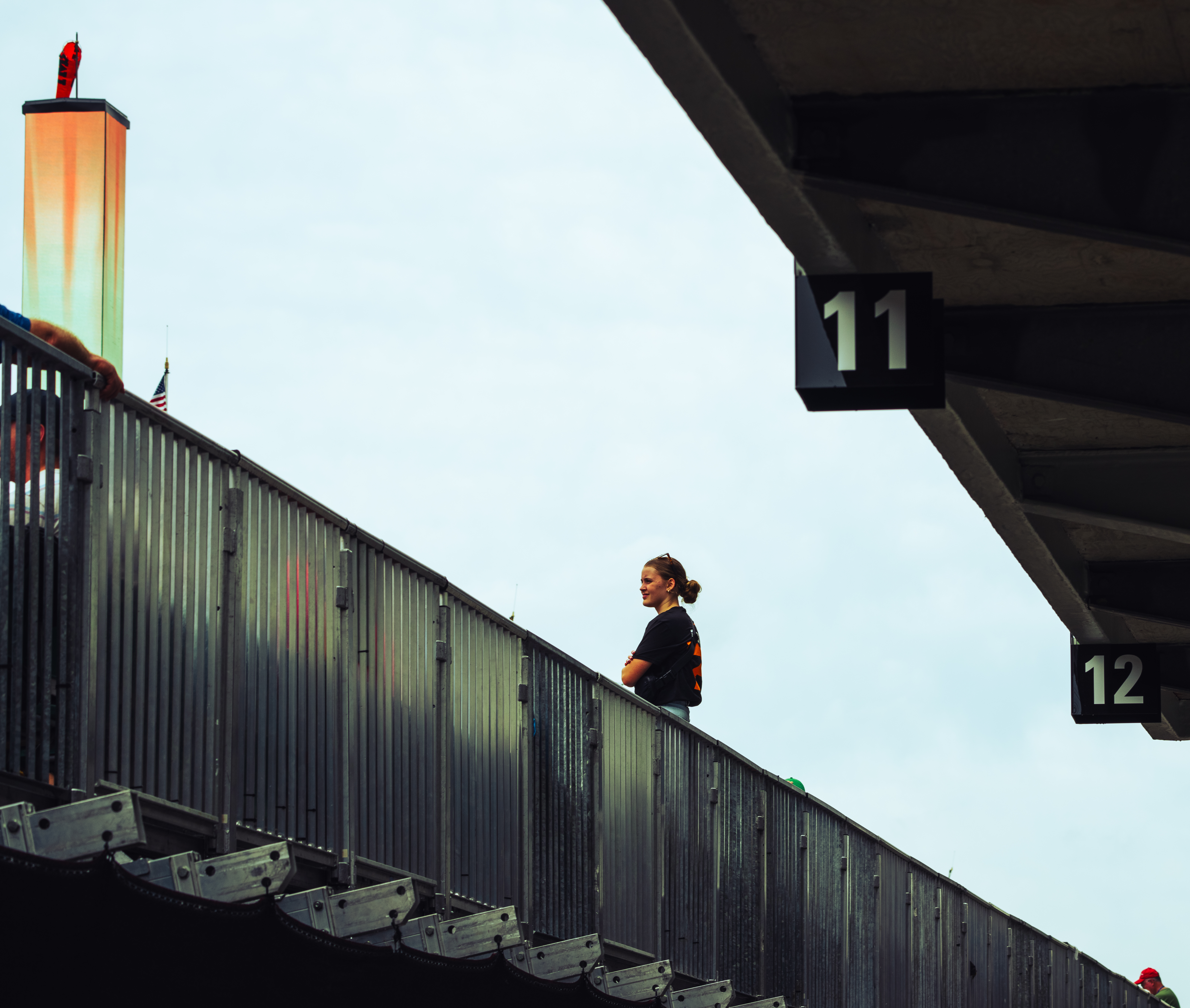
I took a flight of stairs down to the main promenade, taking a right through the underbelly of the main grandstands. The air was thick with the smell of cheap cigarettes and stale beer. Over the long day, I managed to secure a spot in Turn 3, the closest angle I could find to the track. Right before I walked into the grassy fields past the stands, the sun joined us once again, lighting the whole sky bright blue. Large puddles lay undisturbed on the paths leading towards the small hills full of fans. There were a lot more people than I imagined.
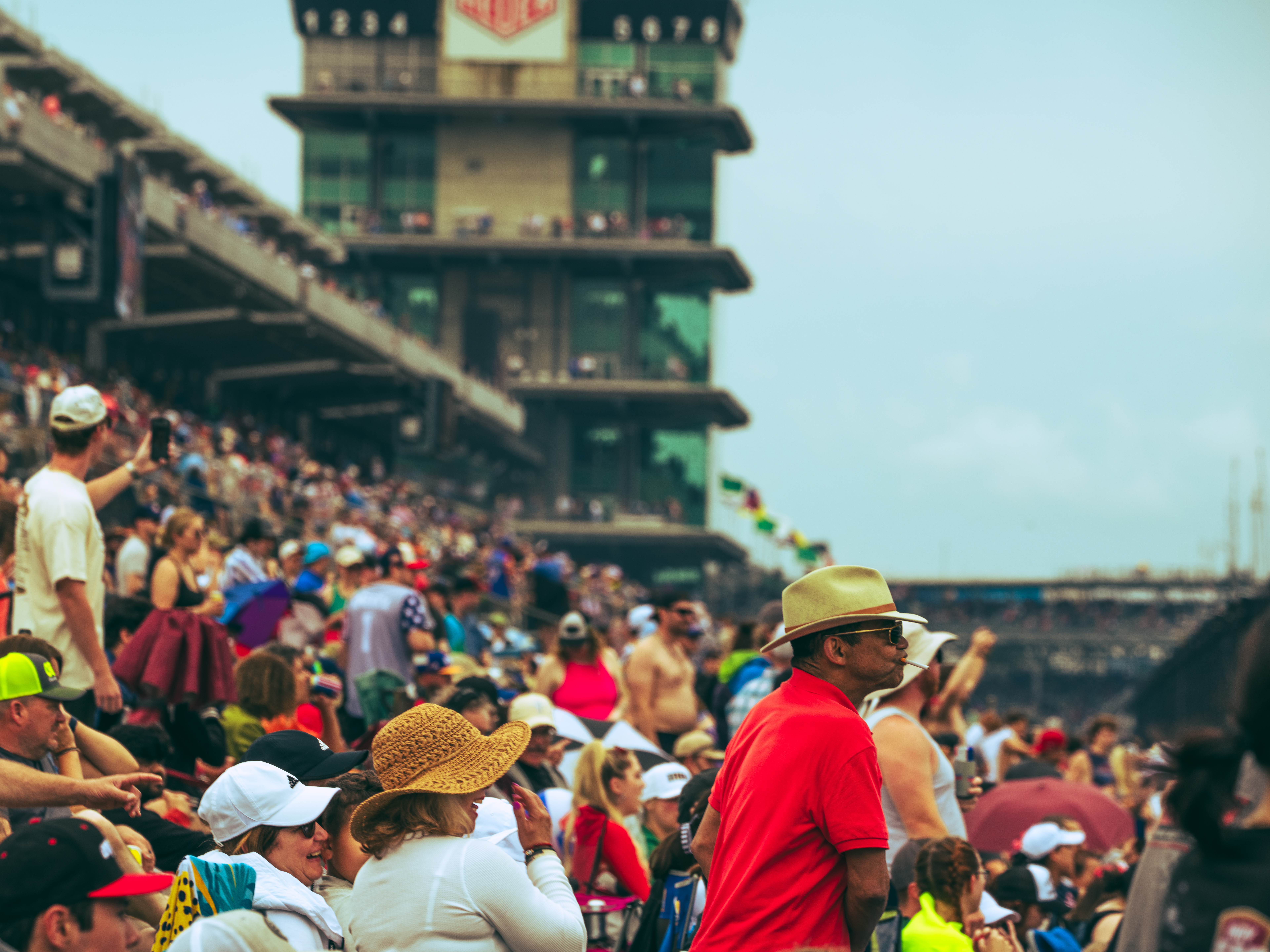
When I found my nook, I clawed through a dense crowd to find more photographers there. They all had more expensive cameras and many more years of experience than I did. It didn’t matter though — that corner was far away from any of the real action, where the cars fought inches apart at unimaginable speeds, where the songs were sung and the flags were saluted to. The only people I could see were safety marshals and masses of sunburned spectators behind tall fences. The Star-Spangled Banner culminated in million-dollar warplanes flying overhead in tight formation, leaving behind trails of red, white and blue. The traditions go on as planned, just a few hours later than expected.
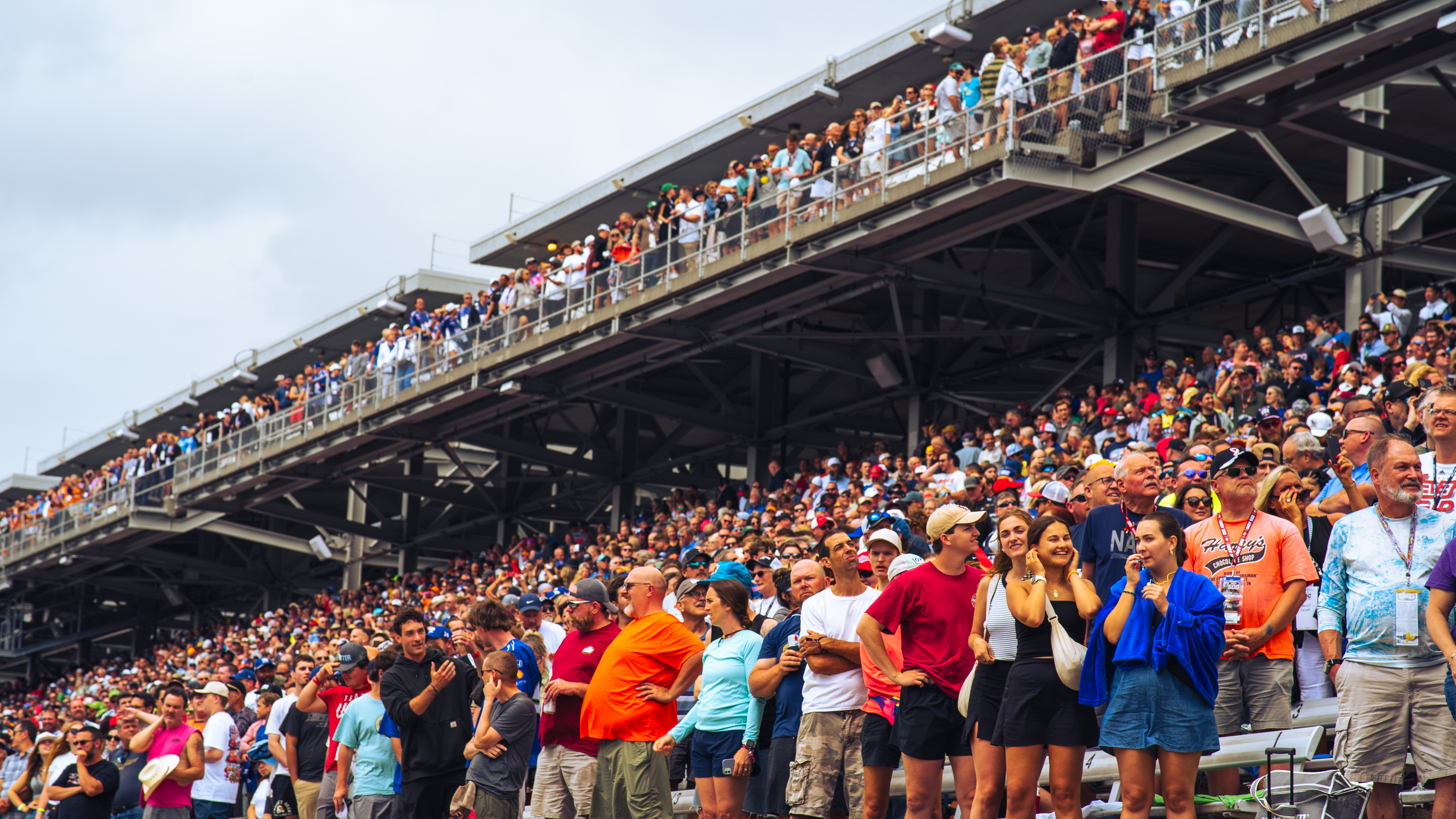
Thirty-three cars were released into their arena and started rounding the track. Everyone zoomed into that 2.5-mile oval in the middle of nowhere, Indiana. When I put in those plasticky, orange earplugs for the first time, silence rang in my ears — all I could hear was the rapid beating of my heart. On the formation lap, my cameras felt heavier than ever. I tried to ease my rapid, muted breathing in those last seconds before the green flag flew. Everyone stood up if they weren’t already. The cars rounded the final corner before mutating into blurs and colors. Human beings weren’t meant to go that fast. They do it anyway.

Exhilaration took me through the first yellow flags and cautions — I didn’t even raise my camera — I just stared in awe as the cars glided along racing lines only drivers and onboard cameras could see. Instead of being deafened by the loud chorus of engines, I understood the essence of power. For the Americans, IndyCar is so much different than NASCAR: the cars don’t scream -– they thunder.
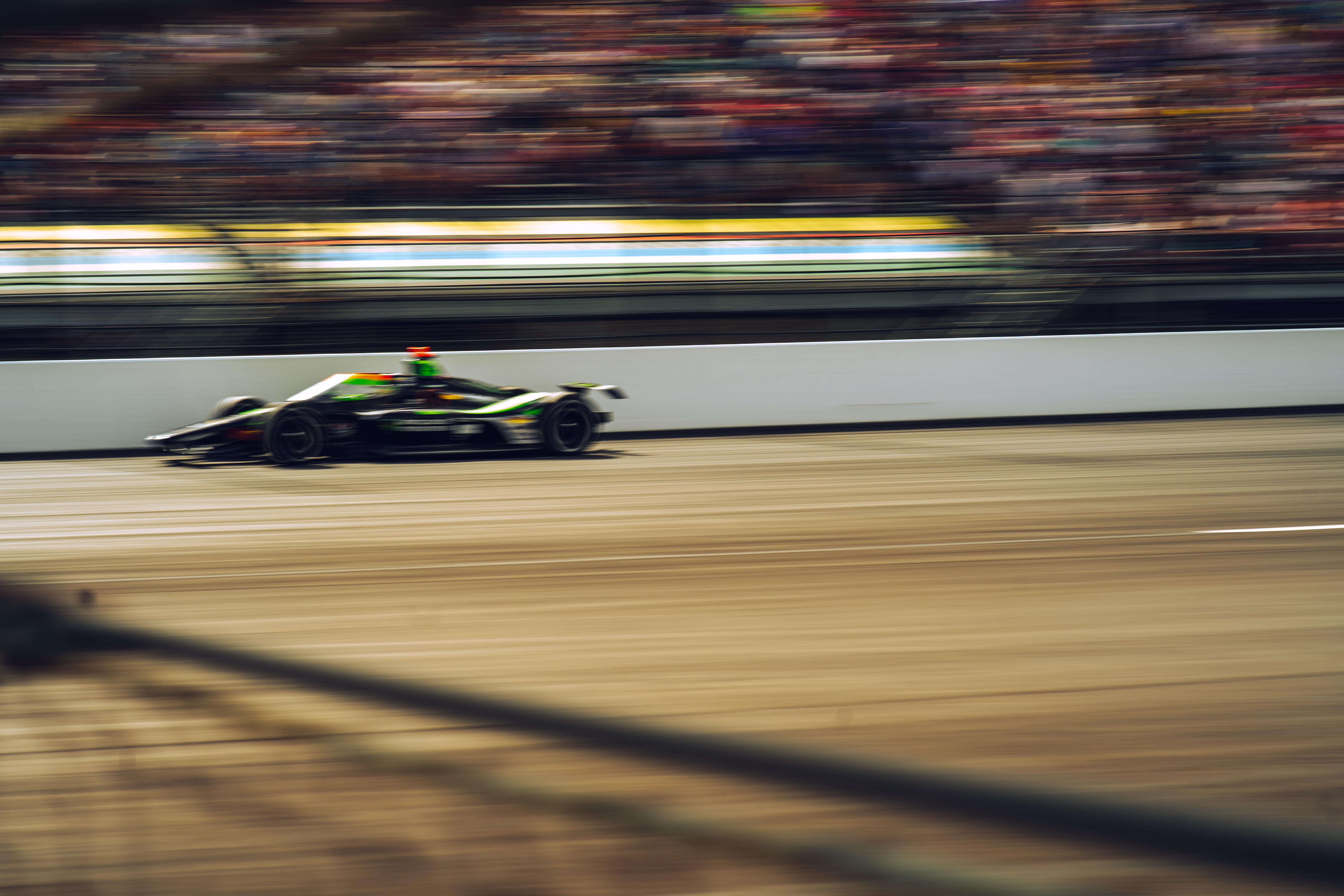
To photograph a race is to try and capture something that can never be understood in only images. Those cars show no emotions, the driver underneath all those covers, safely protected from one of the most dangerous races in the world. I hoped I’d found some, but I’ll always wish I’d found more. It’s not easy to photograph swooping bands of speed — it’s like trying to catch a shooting star at the perfect moment, either.
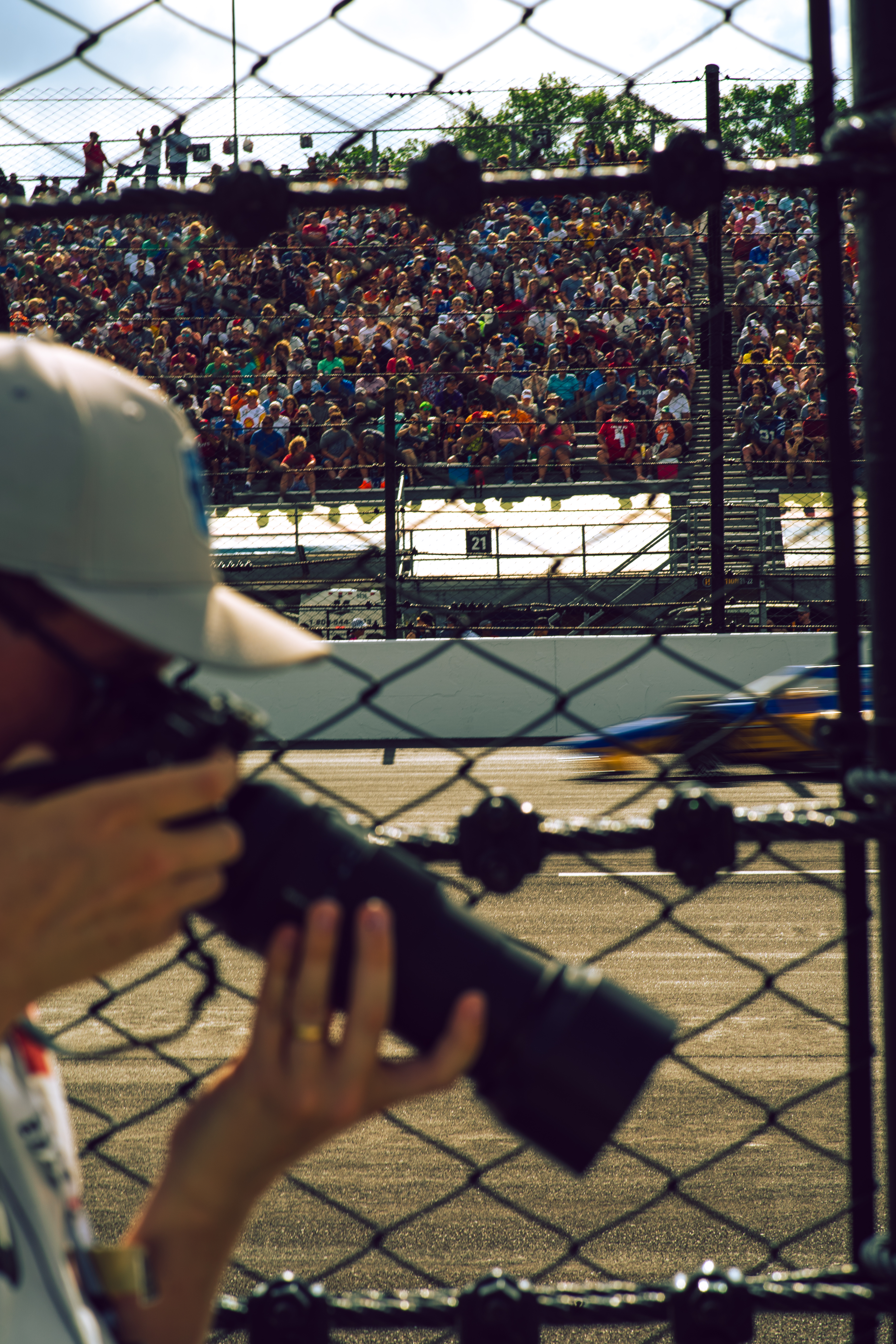
As I began to photograph, the race developed into a painful rhythm of guesswork. When the seven other photographers in that corner raised their cameras, so did I. After the cars left our periphery, a minute of silence followed, in either celebration or distinct unhappiness. Then, they come around again before there’s a chance to see if the camera captured anything usable.
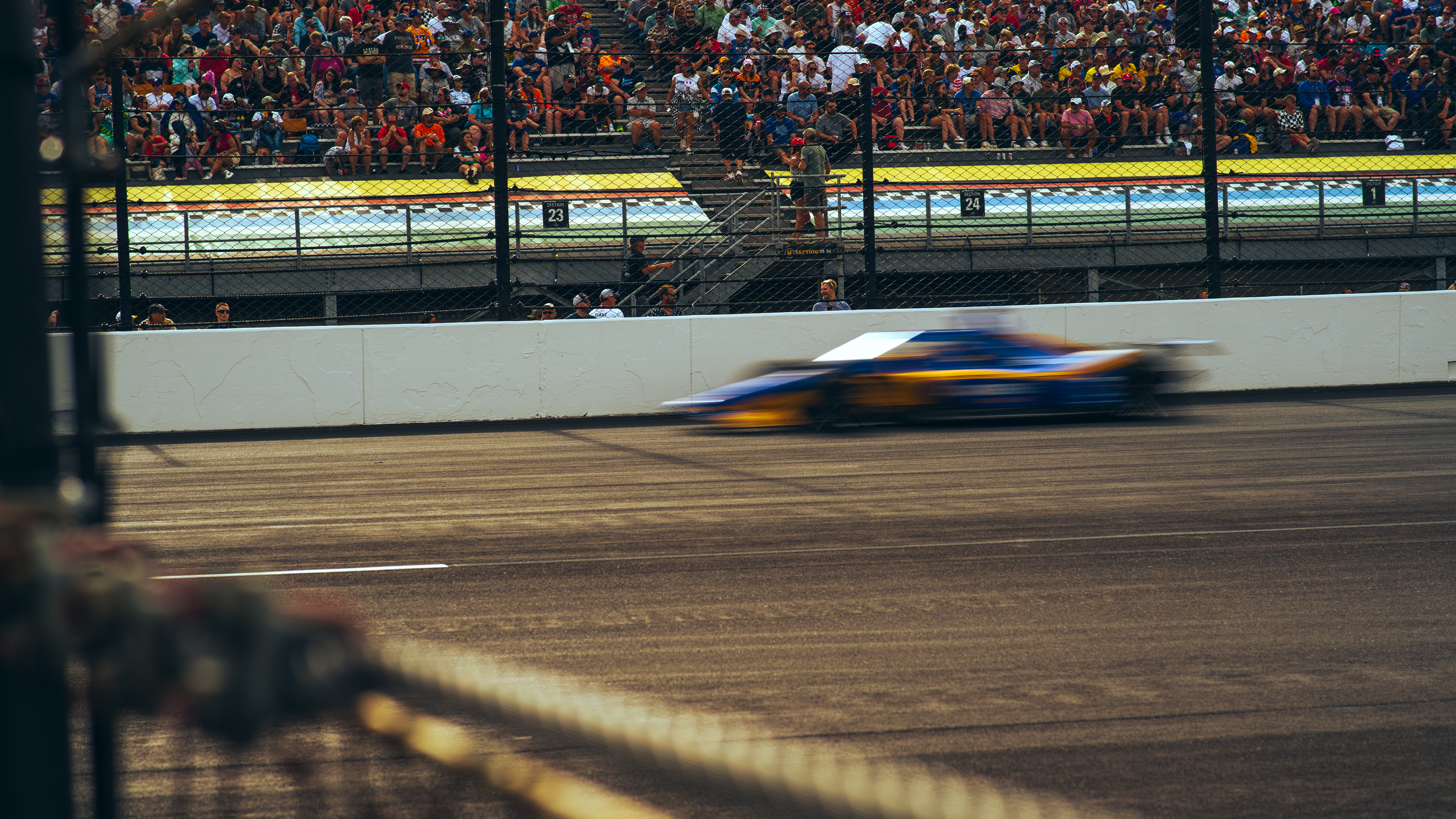
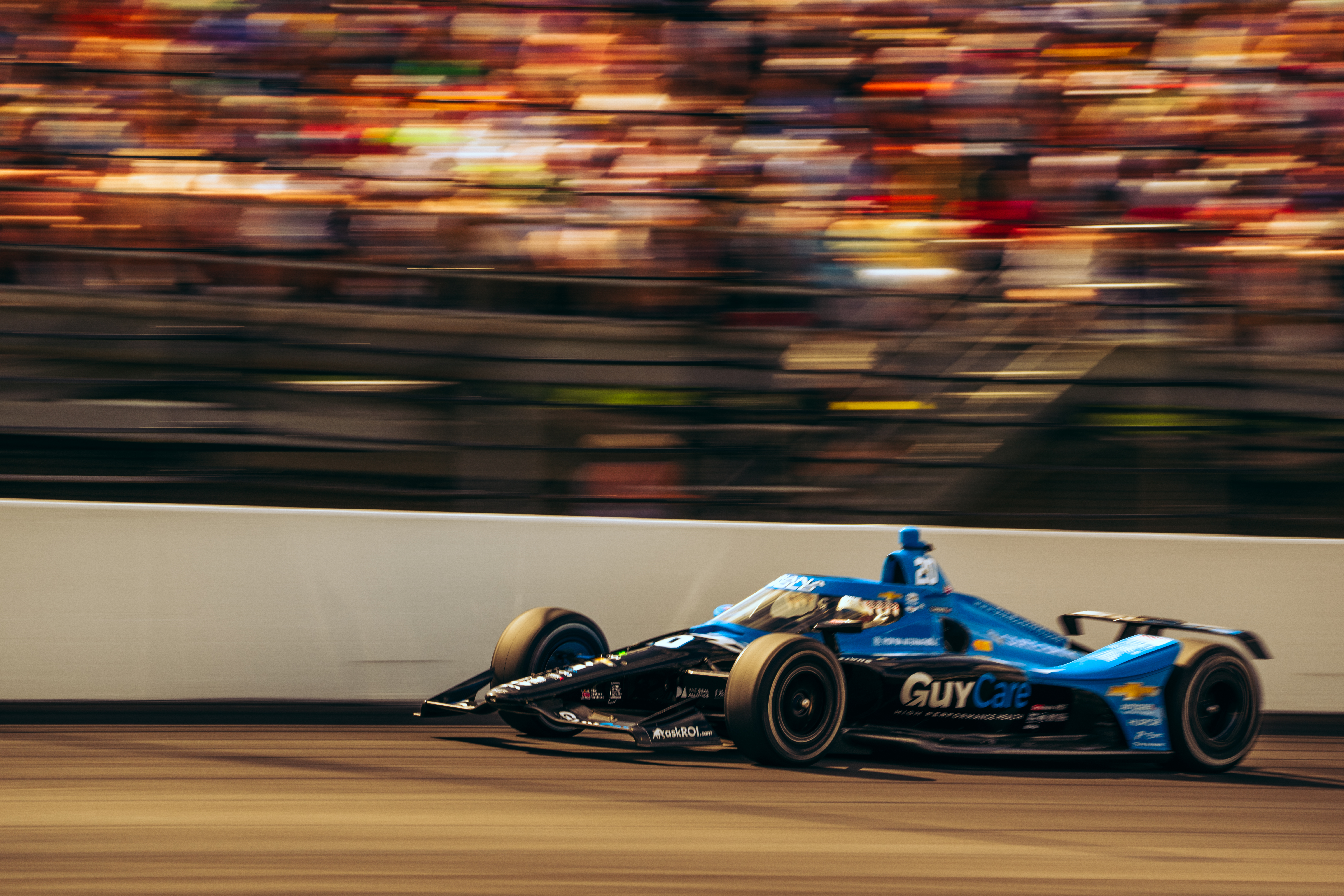
The laps went on, ebbing and flowing, but in that corner, I couldn’t find anything. I knew almost every other camera in the place captured that same race and the rest would come out to see the finish. I knew tomorrow, or the week after, the world would have moved on to the next thing. I was searching for something new, to try and slow the world down long enough to find the one angle that could change it. I guess human beings aren’t really meant to do that, either. The cars go around the track again, nonetheless, and the world moves on. After 76 laps, I walked away. I wanted to look at something else.
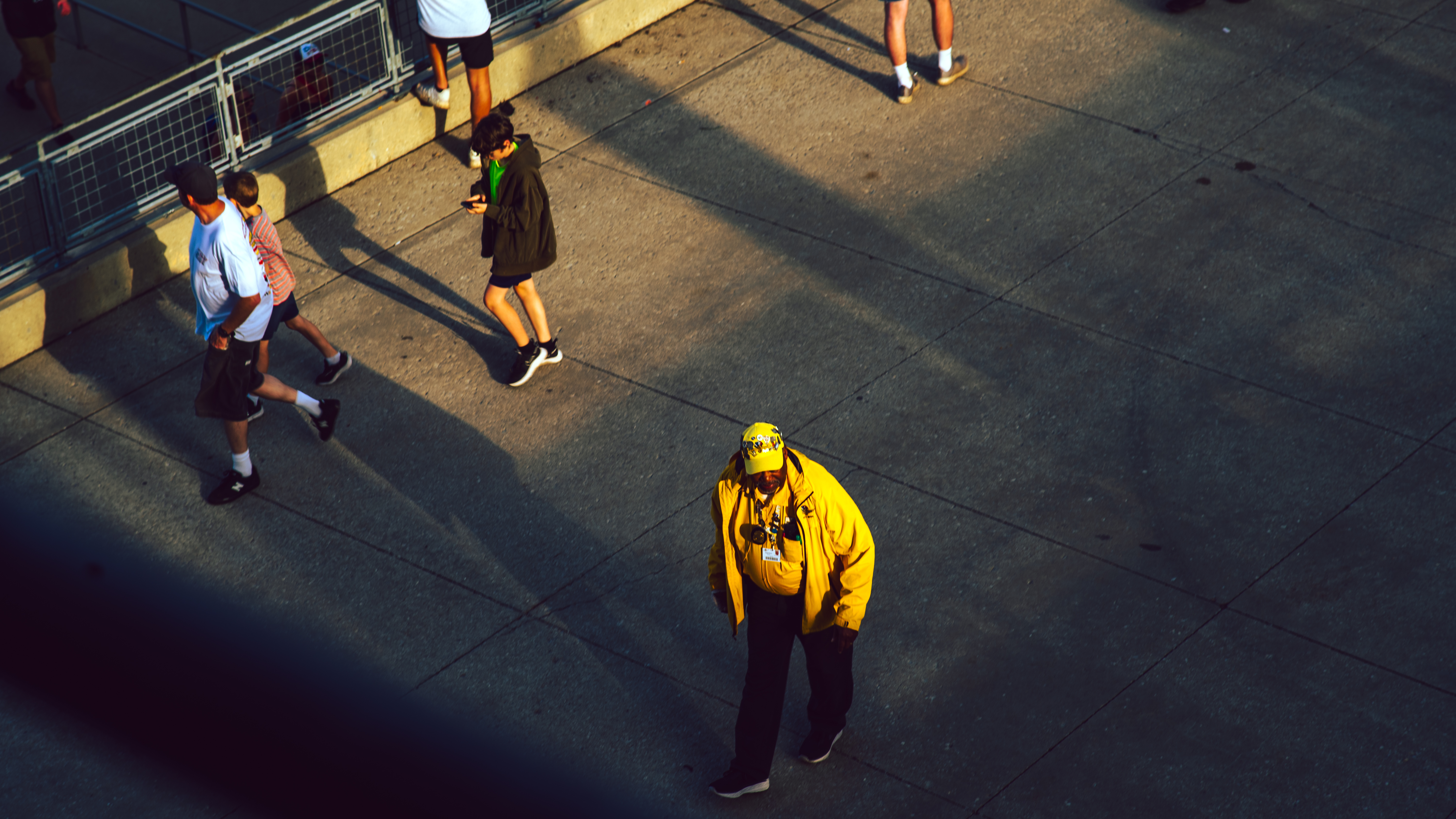
—
Polka Dots and Moonbeams
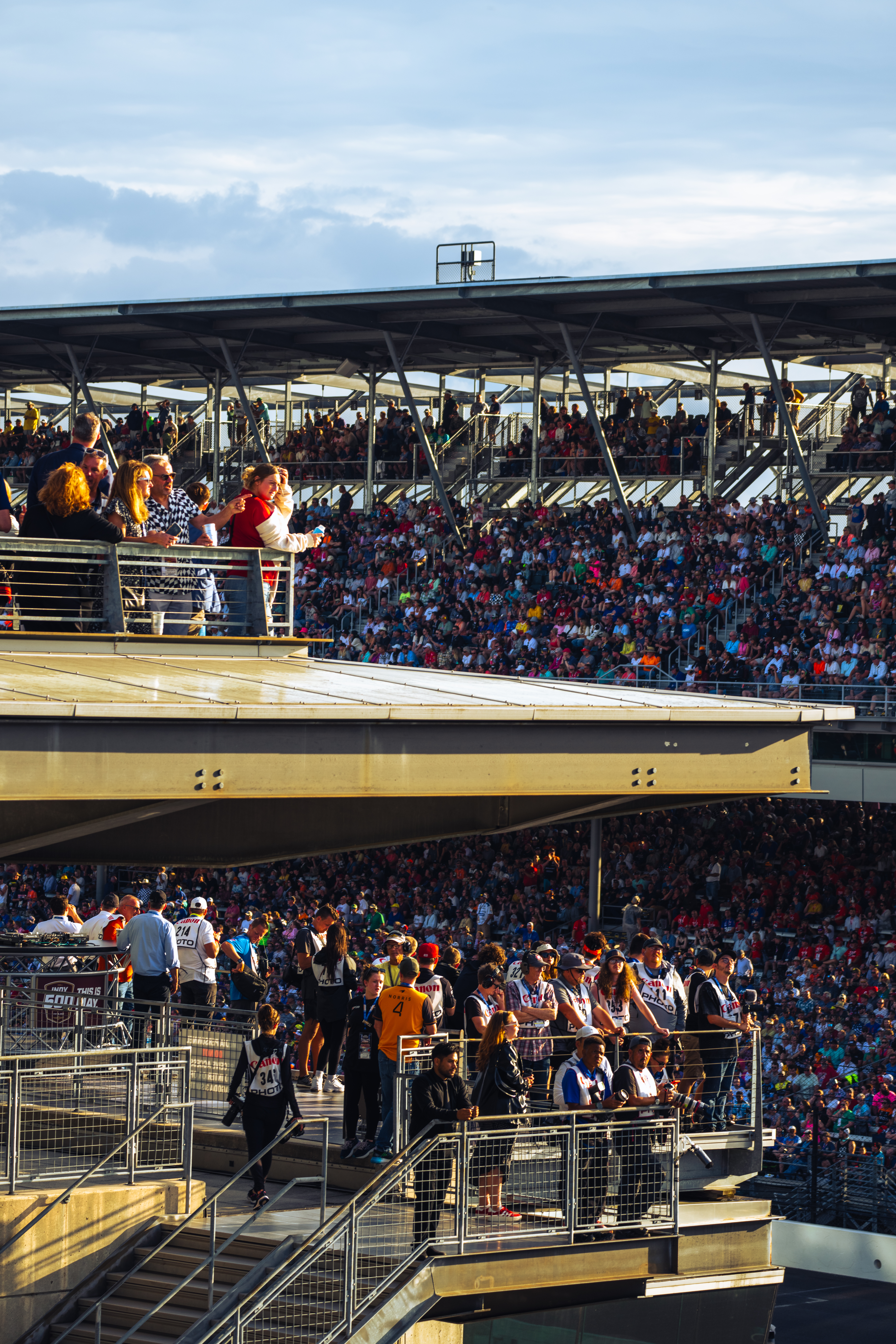
After an extraordinarily long day, all I wanted to do was go home and sleep. But naturally, pulling out of our spot in the Media Lot, we hit traffic. After 20 minutes, I hopped out of the car and walked down the thin gravel path toward the main road. Tailgaters were still partying as the sun set, throwing footballs around, and smoking cigarettes while the sky drooped from light purple to the deepest of blues. Somnambulant, I passed tired and bored drivers trapped in their cool, air-conditioned cars. I recognized a few of them from the long day we had all shared. I turned a corner to the main intersection and saw a line of red tail lights leading off into infinity. When I returned to the trusty Honda CRV that had willed us all the way to Speedway, Indiana, I slouched into the passenger seat and tried not to fall asleep. It had been one of the longest working days of my life. Every system in my body was shutting down and I didn’t have an ounce of strength left to fight it off. As I kept fading in and out of consciousness, I could still hear those cars thunder around the most prestigious oval in all of racing — I could still smell the gasoline in the air. But every time I opened my eyes, I was still stuck in that parking lot in the middle of nowhere. After a certain point, I gave up trying not to fall asleep. The world in front of me didn’t seem to be moving anytime soon. Someone or something would wake me when the time was right – I had earned at least a few minutes to dream.
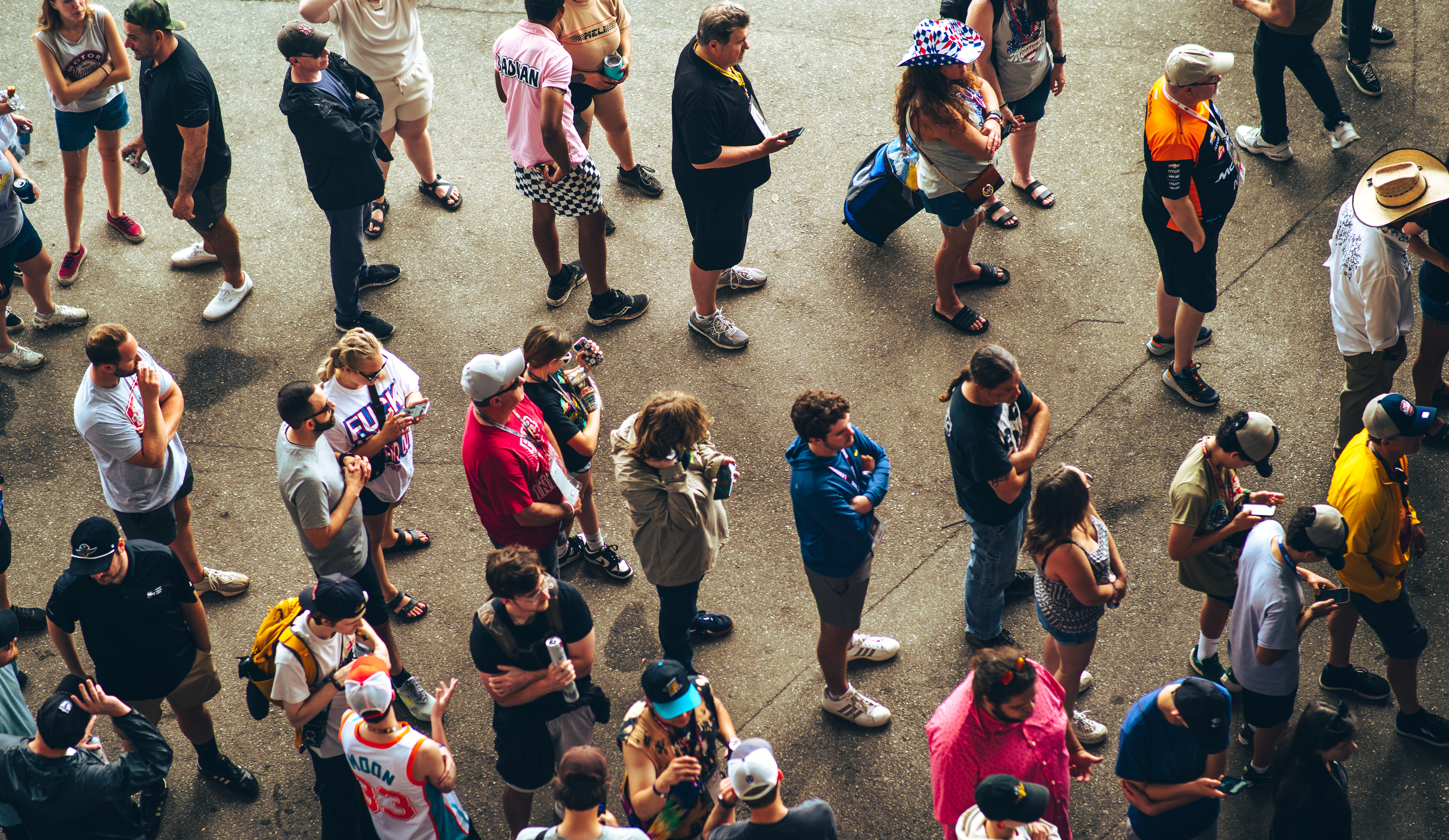
After nearly an hour of waiting in a completely frozen parking lot, I awoke to a Honda engine revving alive as the line of cars in front of us shot left, summoning us into the green darkness. After we found our way onto a deserted highway, I swiftly fell asleep again. A slight swerve in the road woke me, and my good friend Isabel, who accompanied me on this long and brutal journey, promptly asked if we could switch for the hour or so heading back to Chicago. I wasn’t looking forward to the prospect; I hadn’t driven a car in so long, and I didn’t think I’d have any feel for it. But I wasn’t the one who had just stayed awake all that time.
We stopped at a deserted rest stop to swap places in a parking lot of a gas station that was just about to close. I strapped in and put on some jazz before jolting the car backward. The small battery of lights illuminating that forgotten patch of civilization shrunk smaller and smaller in the rearview as I slowly pulled off into what can only be described as complete darkness. For the split seconds that I was brave enough to look out the window, I was greeted with the blank face of pure night, the small lights of radio towers streaking past in thin bands of white and red as I swiftly turned my head back to the ever-advancing road ahead.
The nap was enough. Somewhere, at some point, I calmed down. I began to see the lights of highways pop up as signs of civilization began to pop up every now and then on tall green signs. The car began to flow under me and I started looking a little bit further down the road.
The numbers counting down to Chicago kept on getting lower, and lower, before every square inch of the road lit up. One of the most scenic skylines in the world rose up from the dark horizon and we knew we were home. The car glided along crumbling overpasses and through yellowed tunnels. When I pulled onto my street and said goodbye to my friend, it was certainly past midnight, but adrenaline was freely coursing through my bloodstream. I still wanted something to do. I tossed everything in my room, changed, then headed to a friend’s house for a party. It had just rained in Chicago.
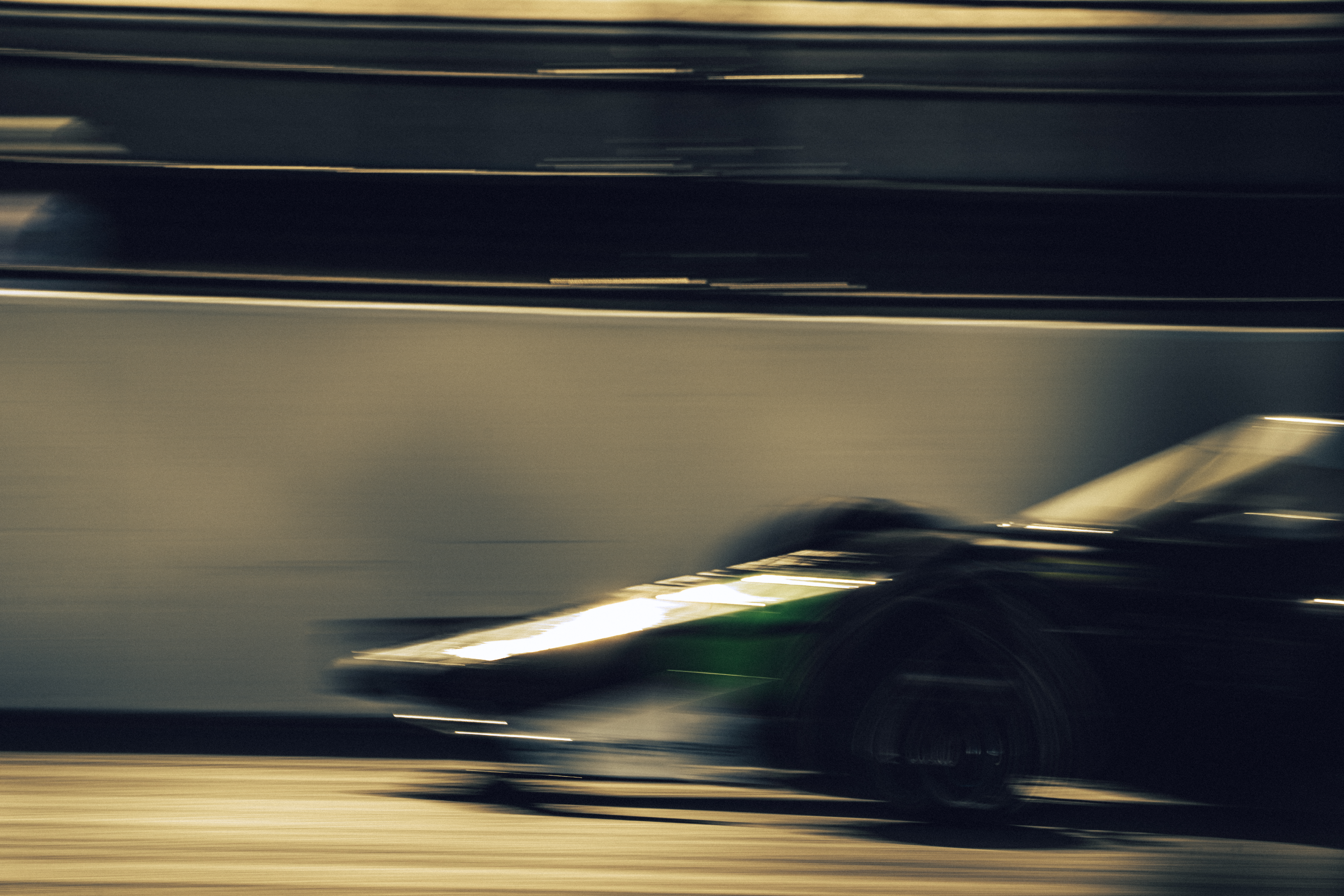
Header photo by Varun Khushalani


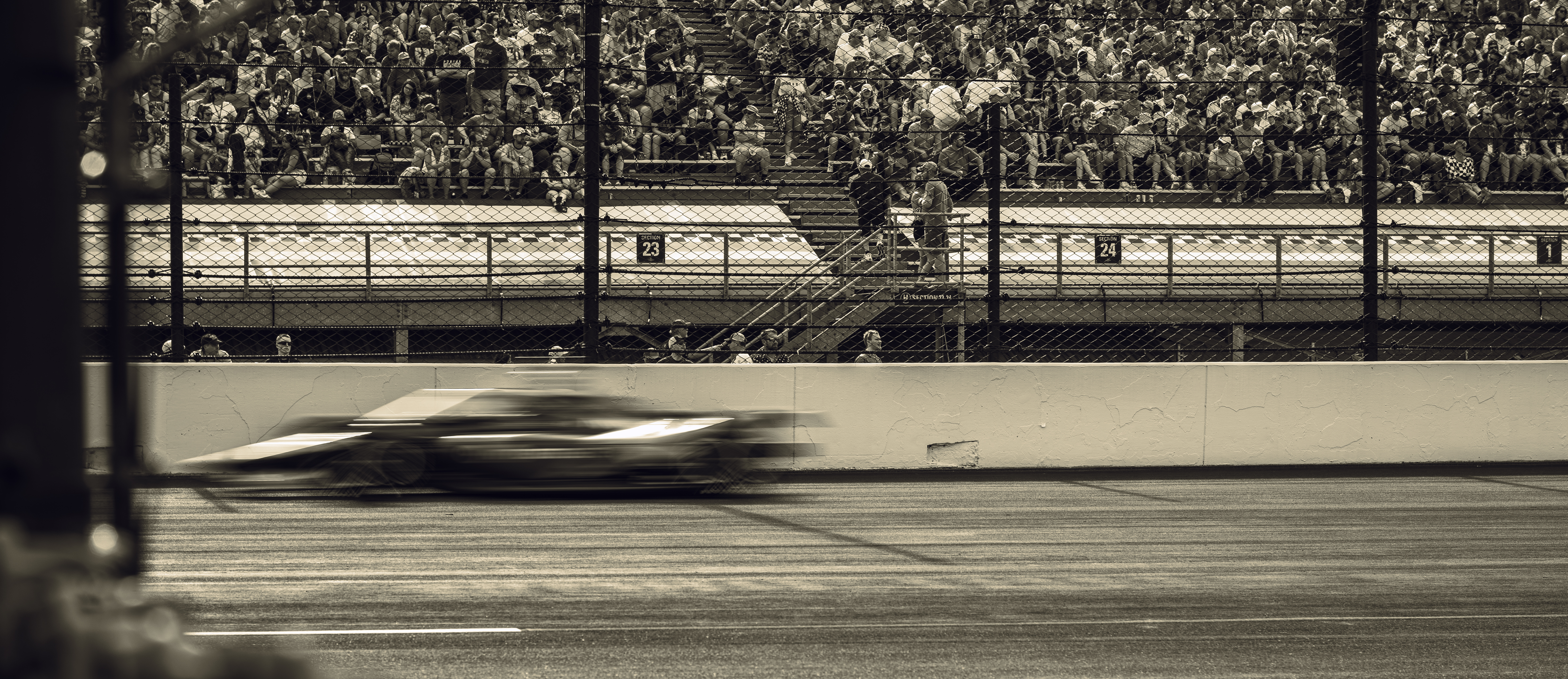

NO COMMENT